Deep-sea fisheries in the North-East Atlantic: What Oceana does
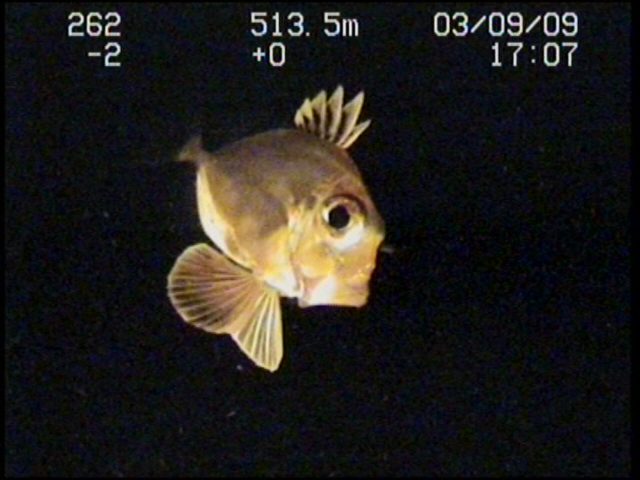
The EU began to manage deep-sea stocks in 2002, but Regulation (EC) 2347/2002 (the ‘deep-sea access regime’) has failed to ensure their sustainable management. Few species are managed with catch limits (total allowable catches or TACs), and these TACs have frequently been set higher than scientifically advised. Even so, in about 50% of cases, actual catches have exceeded the agreed TACs. Many captured species are not included at all in the regulation and therefore are completely unmanaged, and can be caught in unlimited quantities. The regulation also places no restrictions on destructive fishing gears (i.e., deep-sea bottom trawls and gillnets), leaves ecosystems unprotected from damaging bottom gears, and fails to reflect international commitments made by the EU through United Nations General Assembly (UNGA) Resolutions 61/105 and 64/72, which call upon flag states to implement conservation and management measures to protect vulnerable marine ecosystems (VMEs).
The European Commission tabled a proposal for a new regulation in 2012, which aims to ensure sustainable exploitation of deep-sea fisheries, to minimise environmental impacts, and to improve scientific knowledge about these resources and habitats. This proposal also included the phase-out of destructive, non-selective fishing gears for targeting deep-sea species, because of the direct physical damage they cause to VMEs and high associated levels of by-catch.
During 2013, the issue was debated in the European Parliament. In December 2013, the Parliament adopted its position, which includes a broad package of measures to improve the management and conservation of deep-sea species and ecosystems. Unfortunately, due to human error (a mistake as simple as pushing the wrong voting button), the ban on destructive, non-selective gear was voted down by a difference of only 16 votes.
Currently, the file is being discussed within the Council of Fisheries Ministers, which must now decide its own position. During this process, Oceana is holding ongoing meetings with decision-makers, calling for measures that include:
- Stronger protection of deep-sea sharks, including all gulper sharks (Centrophorus spp.)
- A clear, loophole-free definition of ‘targeted deep-sea fishing’.
- Fishing levels set using catch limits, strictly following scientific advice, and considering impacts on non-target species.
- Closure of areas with VMEs (e.g., deep-sea coral reefs and sponge beds) to bottom fishing.
- Environmental impact assessments in both new and existing fishing areas before authorising deep-sea fishing.
- Measures to prevent overfishing, excess fishing capacity, by-catch, discards, and illegal fishing in all deep-sea fisheries.
- The phase-out of destructive, non-selective fishing gears (i.e., deep-sea bottom trawls and bottom-set gillnets) for targeting deep-sea species.
- Vessel authorisations should be strictly conditional upon cooperation with scientific data collection.
|
Deep-sea fisheries in the Northeast Atlantic. Recommendations for improved management. February 2013 (PDF) |
June 2013 (PDF) |
|
|
Letter – Subject: Lack of Council response to the deep-sea fisheries proposal COM(2012) 371
July 2013 (PDF) |
|
|
Save Europe’s deep sea: Improve conservation and management of deep-sea resources December 2013 (PDF) |
Infograph – Exploiting the most vulnerable resources February 2014 (PDF) |
|
February 2014 (PDF)
|
October 2014 (PDF) |
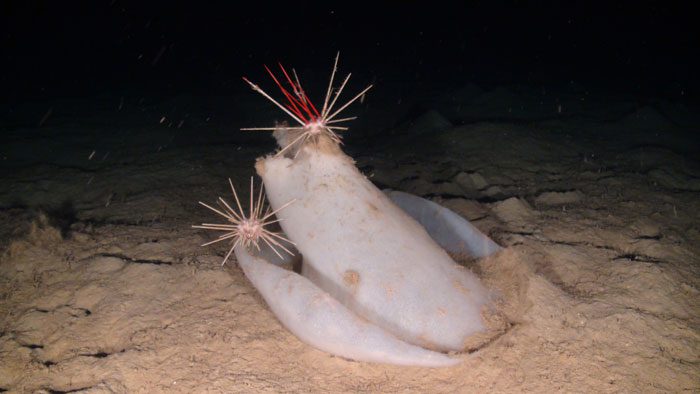




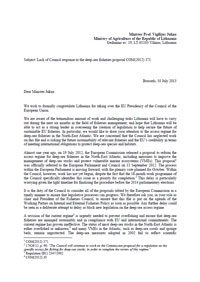

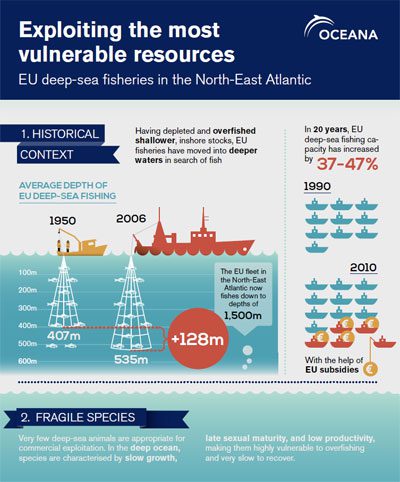
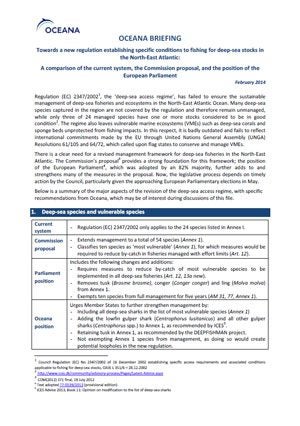
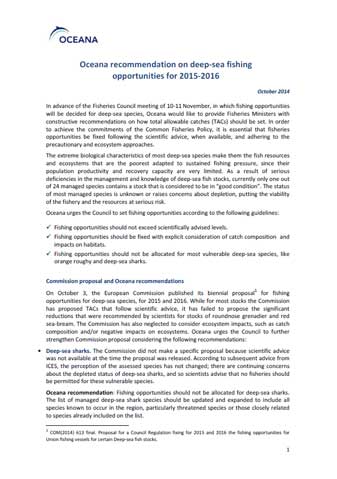 Oceana recommendation on deep-sea fishing opportunities for 2015-2016
Oceana recommendation on deep-sea fishing opportunities for 2015-2016